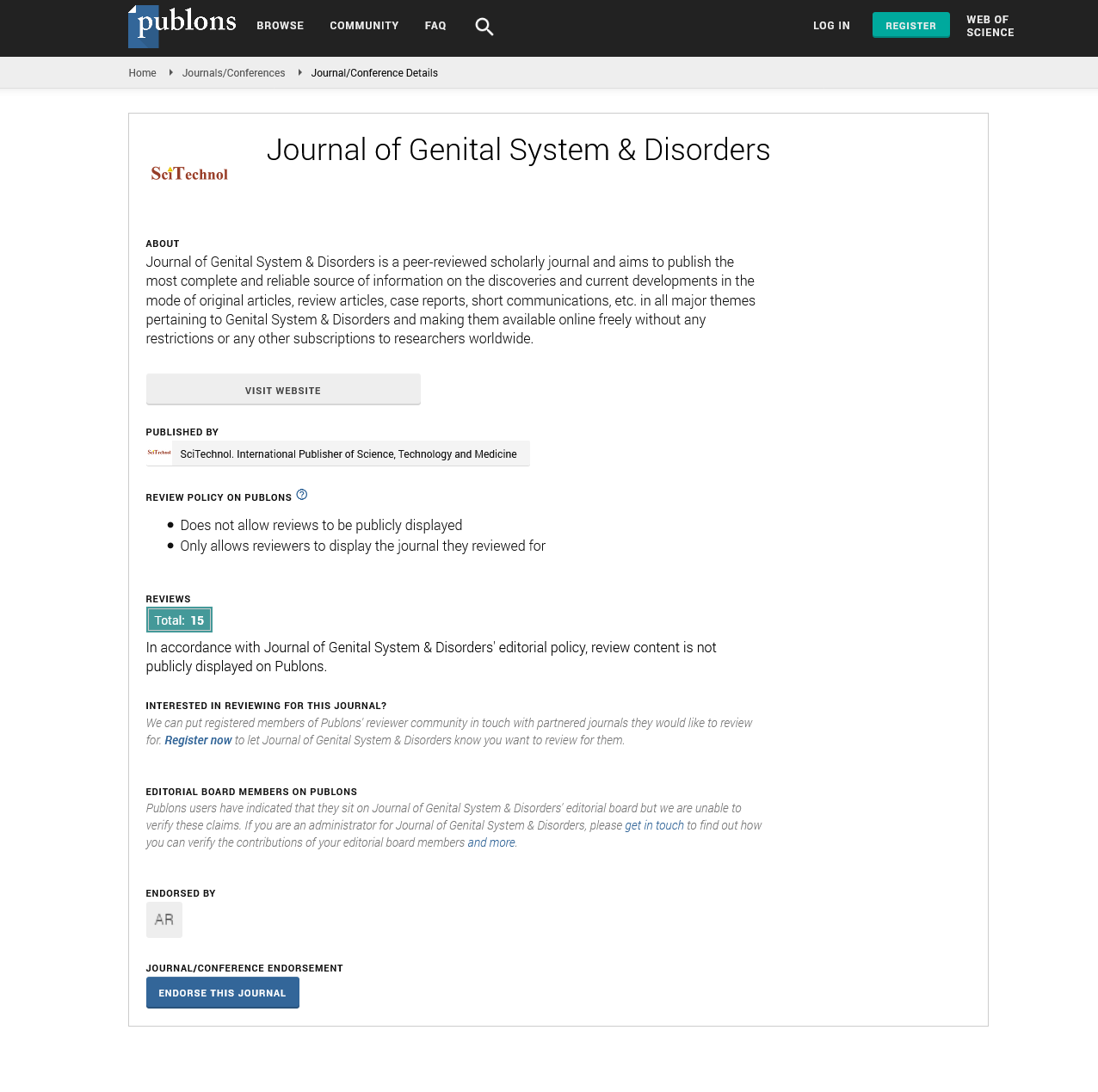Perspective, Vol: 14 Issue: 1
Dynamics of Male Fertility: Emerging Research and Insights
Daniel Nguyen*
Department of Reproductive Biology, University of Oxford, Oxford, England
*Corresponding Author: Daniel Nguyen
Department of Reproductive Biology, University of Oxford, Oxford, England;
E-mail: Nguyendaniel@uoc.uk
Received date: 02 March, 2024, Manuscript No. JGSD-24-128705;
Editor assigned date: 04 March, 2024, QC No. JGSD-24-128705 (PQ);
Reviewed date: 18 March, 2024, QC No. JGSD-24-128705;
Revised date: 03 March, 2025, Manuscript No. JGSD-24-128705 (R);
Published date: 10 March, 2025, DOI: 10.4172/2325-9728.1000288
Citation: Nguyen D (2025) Dynamics of Male Fertility: Emerging Research and Insights. J Genit Syst Disord 14:1
Description
Sperm quality and its determinants
Recent studies have underscored the pivotal role of sperm quality in male fertility, sparking a deep-dive into the determinants and dynamics of this aspect. Researchers have delved into the intricate mechanisms underlying sperm production, viability, and motility, with a keen focus on unraveling the impact of lifestyle, environmental, and genetic factors on sperm quality. Furthermore, the burgeoning utilization of advanced imaging technologies and genetic profiling has allowed for a more comprehensive assessment of sperm morphology, DNA integrity, and epigenetic modifications, offering invaluable insights into male fertility at a cellular and molecular level.
Lifestyle and environmental influences on male reproductive health
In parallel, mounting attention has been directed towards the influence of lifestyle and environmental factors on male reproductive health. Studies have probed into the effects of various lifestyle choices, including diet, physical activity, substance use, and stress, on sperm quality and male fertility, revealing intricate associations that warrant further exploration. Furthermore, environmental factors such as exposure to endocrine-disrupting chemicals, air and water pollutants, and occupational hazards have been identified as potential contributors to male reproductive health complications, instigating heightened research endeavors into understanding and mitigating their detrimental effects on male fertility.
Genetic and epigenetic insights into male fertility
Advancements in genetic and epigenetic research have catapulted male fertility studies into a new era of understanding, unveiling the intricate interplay of genetic variants, epigenetic modifications, and reproductive health. With the aid of cutting-edge genomic and epigenomic analyses, researchers have identified genetic polymorphisms and epigenetic alterations that correlate with male infertility, offering novel perspectives into the genetic underpinnings of male reproductive disorders and paving the way for personalized approaches to male fertility evaluation and treatment. Additionally, epigenetic modifications in sperm have emerged as a captivating avenue of investigation, with studies elucidating the potential impact of paternal epigenetic inheritance on offspring health and development, sparking compelling discussions on transgenerational effects of male fertility-related epigenetic aberrations.
Factors affecting male fertility: Unraveling complex interactions
The exploration of factors influencing male fertility has extended beyond conventional paradigms, encompassing multifaceted interactions that dictate male reproductive health. In addition to the aforementioned domains, studies have ventured into understanding the influence of comorbidities, hormonal imbalances, age-related factors, and psychological well-being on male fertility. This holistic approach has fostered a more comprehensive understanding of male fertility, emphasizing the importance of addressing diverse factors that converge to intricately shape male reproductive health and fertility outcomes.
The way forward: Implications for clinical practice and future research
The evolving landscape of male fertility research has profound implications for clinical practice, shaping diagnostic approaches, treatment modalities, and counseling strategies for male individuals encountering fertility challenges. Furthermore, the insights gleaned from emerging research fuel the need for continued exploration, propelling the development of innovative interventions, preventive measures, and personalized treatments tailored to address the diverse array of factors influencing male fertility.
Conclusion
The burgeoning research on male fertility has ushered in a transformative era, shedding light on the multifaceted dynamics of sperm quality, male reproductive health, and the intricate factors influencing male fertility. As the research landscape continues to expand, the intricate interplay of lifestyle, environmental, genetic, and epigenetic factors is poised to unravel novel avenues for understanding and addressing male fertility issues, propelling the field towards enhanced clinical care, preventive strategies, and personalized interventions.
 Spanish
Spanish  Chinese
Chinese  Russian
Russian  German
German  French
French  Japanese
Japanese  Portuguese
Portuguese  Hindi
Hindi 
